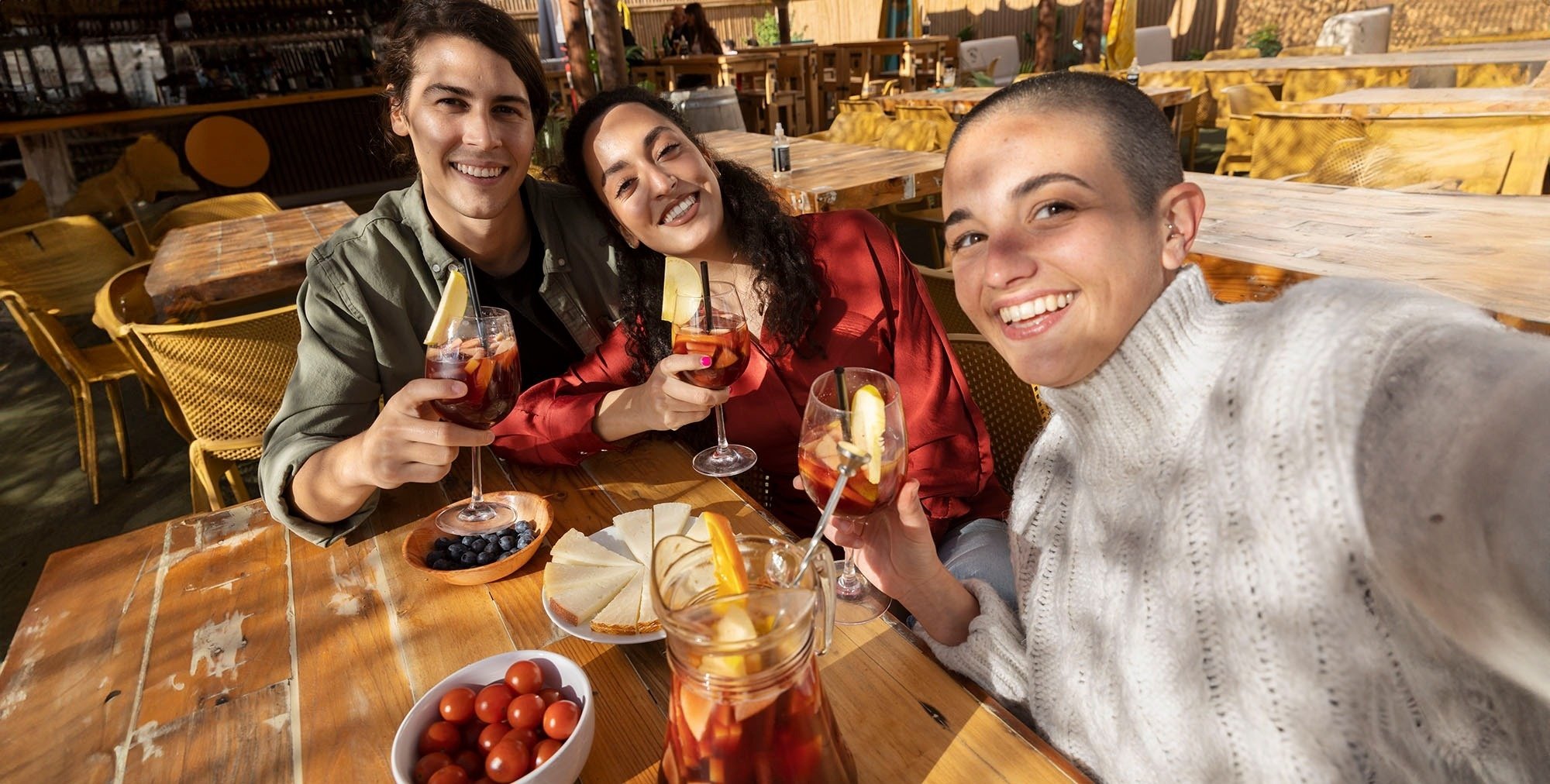Discovering Sevilla: Fascinating Facts Beyond the Monuments
Joy Setas Coworking 05/09/2024
Seville, the heart of Andalusia, is known for its stunning monuments, such as the Seville Cathedral, the Giralda and the Alcázar. However, the city's charm goes far beyond these historic landmarks. Seville's rich tapestry of culture, traditions and curiosities offer a unique insight into its soul. Here are some fascinating facts about Seville that go beyond its famous landmarks and reveal the vibrant essence of this Andalusian gem.
Seville is often credited with being the birthplace of tapas. It is said that the tradition of serving small plates of food to accompany drinks was born here. Legend has it that King Alfonso X decreed that taverns could not serve wine unless accompanied by food to prevent drunkenness. Today, tapas are a staple of Spanish cuisine, and Seville's tapas are some of the best in the country. Exploring the city's tapas bars is a culinary adventure not to be missed.
Seville is famous as the "City of Orange Trees". With some 25,000 bitter orange trees lining its streets, the city is filled with their fragrant blossoms, especially in spring. Although the fruit of these trees is too bitter to eat fresh, it is exported to Britain, where it is used to make the famous Seville orange marmalade. The scent of the orange blossoms, known as "azahar", is a charming feature of the city, especially in spring.
Although flamenco is popular throughout Spain, its spiritual home is in Seville. This exciting art of music and dance has deep roots in the city, especially in the Triana neighborhood. Historically, Triana has been a melting pot of cultures that has contributed to the development of flamenco. Attending a flamenco show in Seville is an immersive experience that offers a deep connection to Andalusian culture.
Seville is known for its delicious regional cuisine, and one dish that stands out is salmorejo. This cold, creamy tomato soup is similar to gazpacho but thicker and richer. Made with tomatoes, bread, olive oil, and garlic, and usually garnished with hard-boiled eggs and Serrano ham, salmorejo is a refreshing treat, especially during the hot summer months. It's a must-try for any foodie visiting the city.
Holy Week in Seville is one of the most elaborate and well-known in Spain. The processions during this week are notable for their length and intensity. Some last up to 14 hours and involve thousands of people carrying enormous, intricately designed floats. These floats depict scenes from the Passion of Christ and are carried through the streets by "costaleros," who bear the weight on their shoulders.
The Teatro de la Maestranza, Seville's main opera house, is one of the oldest operating theatres in Spain. It opened in 1841 and has been a hub for cultural events such as opera, ballet and classical music concerts ever since. The theatre's grand architecture and acoustics make it a revered venue for artists and audiences alike.
Seville's April Fair is one of the most vibrant and colourful in Spain. Held two weeks after Easter, it transforms the city into a lively spectacle of flamenco, bullfighting and fairground rides. The fairground fills with "casetas", decorated tents where locals gather to dance, eat and socialise. It's a week-long celebration of Sevillian culture and a fantastic time to experience the city's festive spirit.
The Royal Tobacco Factory of Seville was the first of its kind in Europe and one of the largest industrial buildings of its time. Built in the 18th century, it now houses the University of Seville. This historic building is famous for being associated with Georges Bizet's opera "Carmen", as the protagonist Carmen worked in the factory as a tobacco worker.
Seville is a city that loves to celebrate, with festivals taking place throughout the year. In addition to Semana Santa and the Feria de Abril, there are many other celebrations such as the Bienal de Flamenco, a prestigious flamenco festival held every two years, and the Seville European Film Festival, which showcases the best of European cinema. These events showcase the cultural richness of the city and the zest for life of its inhabitants.
Seville is one of the hottest cities in Europe, with summer temperatures often exceeding 40°C (104°F). This extreme heat has influenced many aspects of daily life in Seville, including the traditional siesta, in which shops close in the afternoon to allow residents to rest during the hottest part of the day. The city's warm climate also means that outdoor living is an important part of the Sevillian lifestyle, with many social gatherings taking place in plazas and street cafés.
Seville is a city that captivates visitors with its rich history, vibrant culture and unique traditions. Beyond its famous landmarks, the essence of the city lies in its lively festivals, culinary delights and the warm hospitality of its people. Whether strolling through its orange-scented streets, enjoying a flamenco show or savoring a plate of tapas, Seville offers a wealth of fascinating experiences that make it an unforgettable destination.
1. The cradle of tapas
Seville is often credited with being the birthplace of tapas. It is said that the tradition of serving small plates of food to accompany drinks was born here. Legend has it that King Alfonso X decreed that taverns could not serve wine unless accompanied by food to prevent drunkenness. Today, tapas are a staple of Spanish cuisine, and Seville's tapas are some of the best in the country. Exploring the city's tapas bars is a culinary adventure not to be missed.
2. The city of oranges
Seville is famous as the "City of Orange Trees". With some 25,000 bitter orange trees lining its streets, the city is filled with their fragrant blossoms, especially in spring. Although the fruit of these trees is too bitter to eat fresh, it is exported to Britain, where it is used to make the famous Seville orange marmalade. The scent of the orange blossoms, known as "azahar", is a charming feature of the city, especially in spring.
3. The spiritual home of flamenco
Although flamenco is popular throughout Spain, its spiritual home is in Seville. This exciting art of music and dance has deep roots in the city, especially in the Triana neighborhood. Historically, Triana has been a melting pot of cultures that has contributed to the development of flamenco. Attending a flamenco show in Seville is an immersive experience that offers a deep connection to Andalusian culture.
4. A culinary delight: Salmorejo
Seville is known for its delicious regional cuisine, and one dish that stands out is salmorejo. This cold, creamy tomato soup is similar to gazpacho but thicker and richer. Made with tomatoes, bread, olive oil, and garlic, and usually garnished with hard-boiled eggs and Serrano ham, salmorejo is a refreshing treat, especially during the hot summer months. It's a must-try for any foodie visiting the city.
5. The longest Holy Week processions
Holy Week in Seville is one of the most elaborate and well-known in Spain. The processions during this week are notable for their length and intensity. Some last up to 14 hours and involve thousands of people carrying enormous, intricately designed floats. These floats depict scenes from the Passion of Christ and are carried through the streets by "costaleros," who bear the weight on their shoulders.
6. The oldest operating room in Spain
The Teatro de la Maestranza, Seville's main opera house, is one of the oldest operating theatres in Spain. It opened in 1841 and has been a hub for cultural events such as opera, ballet and classical music concerts ever since. The theatre's grand architecture and acoustics make it a revered venue for artists and audiences alike.
7. April Fair
Seville's April Fair is one of the most vibrant and colourful in Spain. Held two weeks after Easter, it transforms the city into a lively spectacle of flamenco, bullfighting and fairground rides. The fairground fills with "casetas", decorated tents where locals gather to dance, eat and socialise. It's a week-long celebration of Sevillian culture and a fantastic time to experience the city's festive spirit.
8. The first tobacco factory in Europe
The Royal Tobacco Factory of Seville was the first of its kind in Europe and one of the largest industrial buildings of its time. Built in the 18th century, it now houses the University of Seville. This historic building is famous for being associated with Georges Bizet's opera "Carmen", as the protagonist Carmen worked in the factory as a tobacco worker.
9. A city of festivals
Seville is a city that loves to celebrate, with festivals taking place throughout the year. In addition to Semana Santa and the Feria de Abril, there are many other celebrations such as the Bienal de Flamenco, a prestigious flamenco festival held every two years, and the Seville European Film Festival, which showcases the best of European cinema. These events showcase the cultural richness of the city and the zest for life of its inhabitants.
10. The climate of Seville
Seville is one of the hottest cities in Europe, with summer temperatures often exceeding 40°C (104°F). This extreme heat has influenced many aspects of daily life in Seville, including the traditional siesta, in which shops close in the afternoon to allow residents to rest during the hottest part of the day. The city's warm climate also means that outdoor living is an important part of the Sevillian lifestyle, with many social gatherings taking place in plazas and street cafés.
Conclusion
Seville is a city that captivates visitors with its rich history, vibrant culture and unique traditions. Beyond its famous landmarks, the essence of the city lies in its lively festivals, culinary delights and the warm hospitality of its people. Whether strolling through its orange-scented streets, enjoying a flamenco show or savoring a plate of tapas, Seville offers a wealth of fascinating experiences that make it an unforgettable destination.











